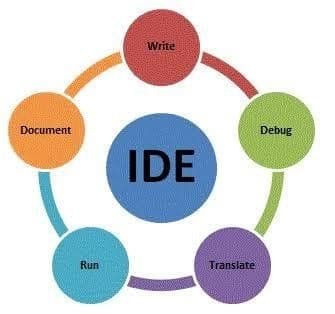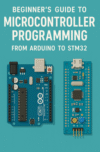Picking the perfect IDE for embedded systems programming feels a lot like choosing the right tool for a precision job—it can make or break your workflow. Whether you’re targeting ARM, PIC, RISC‑V, or something more exotic, the IDE you lean on shapes everything from how fast you write code to how deep you can dig when things go wrong. Here’s a human-centered breakdown of the top players in this space, what makes each one stand out, and where you might stumble.
Keil MDK-Arm (µVision IDE + Compiler)
Keil MDK is the go‑to environment for ARM Cortex‑M development. It bundles:
- µVision IDE, debugger, Arm C/C++ compiler, middleware—ready to go out of the box iar.com+14Keil+14MoldStud+14.
- Broad device support—over 10,000 silicon variants—with free editions available for Cortex‑M0/M0+ Keil.
- Easy setup, intuitive UI, and solid documentation make reaching “Hello World” fast.
But bear in mind, Arm‑licensed toolchains are expensive. The free tiers are handy, but for advanced optimization or safety-certified code you’ll need paid versions.
** Download:** Available from Keil’s site under “MDK-Arm” section—e.g. version 5.43a as of August 2025 RedditWikipedia+3iar.com+3ST+3.
IAR Embedded Workbench
IAR’s IDE delivers ultra‑optimized code and strong analysis tooling:
- It includes compiler, debugger, and static/runtime analysis tools like C‑STAT and C‑RUN Reddit+9Wikipedia+9iar.com+9.
- Supports a massive range of architectures—ARM, RISC‑V, MSP430, AVR, PIC, and more Wikipedia+7Wikipedia+7Electrical Engineering Stack Exchange+7.
- Offers safety‑certified toolchains (e.g., ISO 26262), plus CI/CD integration and cloud workflows Wikipedia+2iar.com+2.
You get excellent performance and industrial-grade tooling, but again, licensing costs can be a barrier unless you’re in a professional or safety-critical environment.
** Download:** Search for IAR Embedded Workbench evaluations (e.g., EWARM for ARM) on the IAR site—it typically offers a 14-day trial iar.com.
MPLAB X IDE (Microchip)
If you’re working with PIC, dsPIC, or SAM microcontrollers, MPLAB X is your logic choice:
- Cross-platform (Windows, macOS, Linux) with NetBeans under the hood Reddit+4Microchip+4Wikipedia+4.
- Includes features like Data Visualizer, I/O view, and integrated programming tools Microchip.
Free to use and tightly integrated into Microchip’s ecosystem—superb for entry-level to mid-range PIC/SAM development. However, support outside Microchip silicon is non-existent.
** Download:** Go to Microchip’s site under the MPLAB X IDE download section (latest is v6.25 as of March 2025) developer.embeddedartists.com+14Microchip+14MoldStud+14.
PlatformIO (VS Code)—and VS Code + Extensions
Not an IDE, but a flexible environment:
- Extensions like PlatformIO can support over 30 embedded platforms—Arduino, ESP, STM32, RISC‑V, etc. MoldStud+3MoldStud+3Wikipedia+3.
- On r/embedded, users praise the flexibility: once your config is coded, starting new projects is a breeze Reddit.
- Great library management, debugging, and a 40% cited productivity boost MoldStud.
But expect hand‑holding: initial setup requires comfort with launch.json, build scripts, debugging protocols, etc.
Mbed Studio / Keil Studio Cloud
Arm’s modern take on embedded environments:
- Mbed Studio: Desktop IDE built on Eclipse Theia, supports Mbed OS, debugging with pyOCD, and Arm Compiler integration Wikipedia+2Wikipedia+2.
- Keil Studio Cloud: Browser‑based editor with Git integration, one‑click build/debug using WebUSB Wikipedia.
Lovely for quick prototyping or teaching, but note that Arm has halted maintenance on Mbed OS—full sunset expected by July 2026 Wikipedia.
Other Notables
If you need broad or niche flexibility:
- STM32CubeIDE, MCUXpresso, Code Composer Studio, SEGGER Embedded Studio, CrossWorks, EmBitz, Infineon DAvE, and more—check Wikipedia’s tidy breakdown for tooling per platform Arduino Forum+6Wikipedia+6Reddit+6.
- Many are free or low-cost and optimized for single-vendor ecosystems—but often limited in portability.
Tradeoffs at a Glance
If I were you, I’d ask:
- What’s your target hardware? ARM Cortex? PIC? RISC-V? That narrows the list fast.
- Are you optimizing for code size or performance? Tools like IAR and Keil shine there.
- Are you on a budget or in hobbyist space? PlatformIO or MPLAB X give powerful free workflows.
- Need safety standards (ISO 26262, MISRA)? IAR is built for that.
- Prefer GUI over config files? Stick with traditional IDEs; otherwise, go flexible with VS Code.
Grab a trial, test one workflow with your target MCU, and you’ll feel out the right path naturally.



